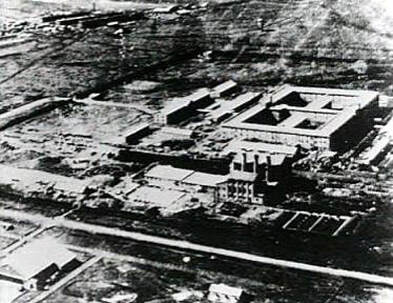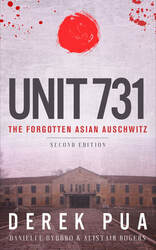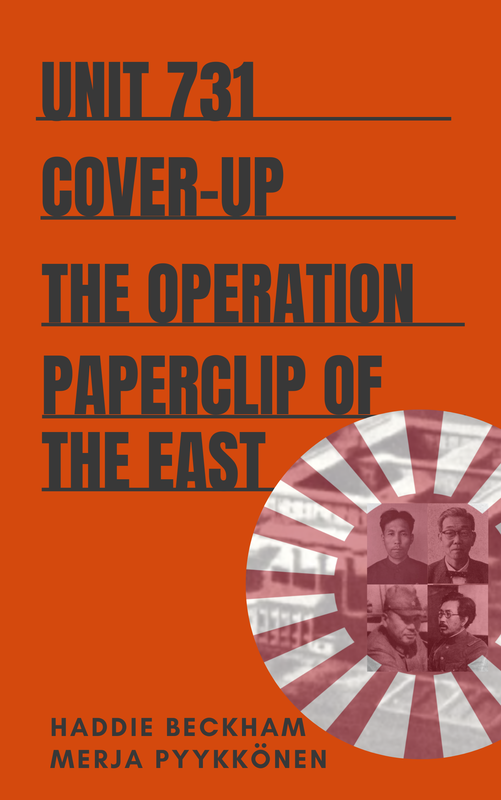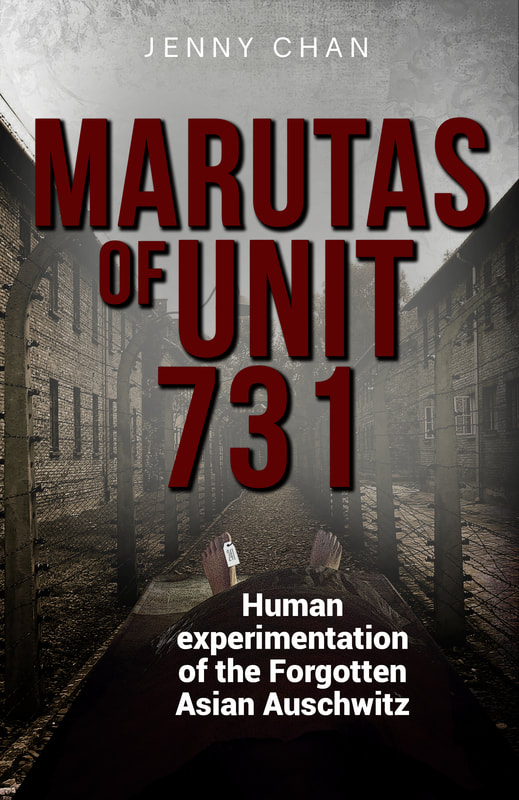|
by Shannon Graham Unit 731, located in Harbin, China, was a facility created by the Japanese during World War II in order to conduct unethical medical experiments on Chinese and POWs from other countries that were captured by Japanese soldiers. Doctor Ishii Shiro, a Japanese scientist, was the father of the concept of developing "bacteriological research as a weapon for offensive warfare." (Gold, 33) The most brilliant minds of Japan were heavily recruited to either work at Unit 731 or institutions related to it. Human experimentation at Unit 731 was a well-known secret within the Japanese research community. Most Japanese civilian scientists before their time at Unit 731 had never used science in an unethical and malicious way. However, conducting experiments without being bounded by ethical laws was appealing to most Japanese scientists. In papers published by Japanese doctors about the experiments, human test subjects were called "Formosan monkeys," "monkeys," and "Manchurian monkeys." Similar to the German Nazi concentration camp Auschwitz, Unit 731 was equipped with large incinerators to dispose of the tortured prisoners. Unit 731 was a lot more secretive than Auschwitz. Prisoners in the complex were numbered 1-100 then started again. Therefore, it is a lot harder to estimate how many had died in Unit 731. Japanese workers called prisoners "logs," and they had jokingly labeled Unit 731 as a lumber mill. There was also Youth Corps, a group of young fifteen to seventeen-year-olds training to be in the military who assisted with the experiments at Unit 731. Prisoners were fed healthy diets, and some were allowed to exercise regularly in order to maintain a normal state of health. This way, data collected on medical experiments carried out on human test subjects were to be more accurate and useful. However, life for the prisoners in Unit 731 was a living nightmare, and the life expectancy averaged one to two months. In some experiments, blood was continuously drawn from the prisoner to see how much blood could be taken from the human body before death. If the prisoner did not die from blood loss, his head was to be chopped off with an ax and his brain used for other experiments. Other experiments included victims having their hands "sawn-off and surgically reattached so that his right hand was sewn onto his left arm and his left hand-sewn onto his right arm." (Barenblatt, 78) Experiments of dismemberment were carried out because of morbid, grotesque interest on the part of the doctors, not because they were looking for a way to reattach hands on the opposite arm. Vivisections, operations normally performed on live animals for the purpose of scientific research (in the case of Unit 731, test subjects were humans), were also common within the facility. The purpose of vivisections in Unit 731 was to study the effects of diseases on human organs. In order to see how diseases affected healthy organs in a living human, doctors, assisted by the Youth Corps, cut open the patient and run tests on the inner organs while the prisoner was alive (and normally without anesthesia). Organs studied included the heart, lungs, liver, stomach, kidney, spleen, and many more. In one case, a Chinese man was experimented on six times, including "one where his arm was amputated. Almost one and a half-hour later, the operation ended, and he was dead" (Chan, 65). When the patient eventually died (from blood loss or the removal of organs), the doctors would keep the organs for other experiments and order another prisoner to be brought in for the next vivisection. No person that was captured and imprisoned in Unit 731 survived. While civilian Japanese doctors were looking for cures for various bacterial diseases, most of the experiments were created out of morbid curiosity and the freedom of unethical practice. Despite killing thousands of innocent people in a dehumanized way, the Japanese government has never recognized the specific atrocities committed at Unit 731. Sources: Barenblatt, Daniel. A plague upon humanity: the secret genocide of Axis Japan's germ warfare operation. HarperCollins. 2004. Chan, Jenny. Marutas of Unit 731: Human Experimentation of the Forgotten Asian Auschwitz. Pacific Atrocities Education. 2020. Gold, Hal. Unit 731 : Testimony. Tuttle Publishing. 2004. ProQuest Ebook Central, https://ebookcentral.proquest.com/lib/ugalib/detail.action?docID=773328. Watts, Jonathan. "Japan guilty of germ warfare against thousands of Chinese." The Guardian, 28 August 2002. https://www.theguardian.com/world/2002/aug/28/artsandhumanities.japan Accessed 28 June 2021. To read more on the topic:
1 Comment
Are you developing ideas as to how to spread the LIGHT of the
Reply
Leave a Reply. |
- Home
- Stories
-
Internship
- Summer 2024 Internship
- Summer 2023 Internship
- Fall 2022 Internship
- Summer 2022 Internship
- Summer 2021 Internship
- Fall 2020- Spring 2021 Internship
- Summer 2020 Internship
- Fall 2019 Internship
- Summer 2019 Internship >
- School Year 2018-2019 Internship
- Summer 2018 Internship >
- Fall 2017 Internship
- Summer 2017 Internship >
- Books
- Archives
-
Resource Page
-
Supplementary Research Guides
>
- Unit 731 - Guide >
-
Philippines' Resistance - Guide
>
- Philippines World War II Timeline
- The Japanese Invasion & Conquest of the Philippines
- Bataan Death March
- Formation of Underground Philippines Resistance
- Supplies of the Guerrilla Fighters
- The Hukbalahap
- Hunter's ROTC
- Marking's Guerrillas
- United States Army Forces in the Philippines of Northern Luzon (USAFIP-NL)
- The Aetas
- Chinese and Filipino-Chinese Nationalist Guerrilla Units
- The Female Faces of the Philippine Guerrillas
- Rising Sun Flag - Guide >
- Pinay Guerrilleras - Guide >
- Fall of Singapore - Guide >
- Three Years and Eight Months - Guide >
- Siamese Sovereignty - Guide >
- The Khabarovsk War Crimes Trial - Guide >
- Unit 731 Cover-up : The Operation Paperclip of the East - Guide >
- Marutas of Unit 731 - Guide >
- Prince Konoe Memoir - Guide >
- Competing Empires in Burma - Guide >
- Battle of Shanghai - Guide >
- Ishi Shiro - Guide >
- Taiwan The Israel of the East - Guide >
- Seeking Justice for Biological Warfare Victims of Unit 731 - Guide >
- Rice and Revolution - Guide >
- Clash of Empires - Guide >
-
Hunger for Power and Self-SufficiencyI - Guide
>
- The Influence of War Rations on Post-War Culinary Transformations
- How World War II Complicated Food Scarcity and Invention
- American Military Innovations
- Government-Sponsored Food Inventions in Europe during World War II
- Feeding the Army: The Adaptation of Japanese Military Cuisine and Its Impact on the Philippines
- Mixed Dishes: Culinary Innovations Driven by Necessity and Food Scarcity
-
Denial A Quick Look of History of Comfort Women and Present Days’ Complication - Guide
>
- The Comfort Women System and the Fight for Recognition
- The Role of Activism and International Pressure
- The Controversy over Japanese History Textbooks
- The Sonyŏsang Statue and the Symbolism of Public Memorials
- Activism and Support from Japanese Citizens
- The Future of Comfort Women Memorials and Education
- Echoes of Empire: The Power of Japanese Propaganda - Guide >
- Lesson Plans >
-
Supplementary Research Guides
>
|
Pacific Atrocities Education
730 Commercial Street San Francisco, CA 94108 415-988-9889 |
Copyright © 2021 Pacific Atrocities Education.
We are a registered 501 (c)(3) charity. |
- Home
- Stories
-
Internship
- Summer 2024 Internship
- Summer 2023 Internship
- Fall 2022 Internship
- Summer 2022 Internship
- Summer 2021 Internship
- Fall 2020- Spring 2021 Internship
- Summer 2020 Internship
- Fall 2019 Internship
- Summer 2019 Internship >
- School Year 2018-2019 Internship
- Summer 2018 Internship >
- Fall 2017 Internship
- Summer 2017 Internship >
- Books
- Archives
-
Resource Page
-
Supplementary Research Guides
>
- Unit 731 - Guide >
-
Philippines' Resistance - Guide
>
- Philippines World War II Timeline
- The Japanese Invasion & Conquest of the Philippines
- Bataan Death March
- Formation of Underground Philippines Resistance
- Supplies of the Guerrilla Fighters
- The Hukbalahap
- Hunter's ROTC
- Marking's Guerrillas
- United States Army Forces in the Philippines of Northern Luzon (USAFIP-NL)
- The Aetas
- Chinese and Filipino-Chinese Nationalist Guerrilla Units
- The Female Faces of the Philippine Guerrillas
- Rising Sun Flag - Guide >
- Pinay Guerrilleras - Guide >
- Fall of Singapore - Guide >
- Three Years and Eight Months - Guide >
- Siamese Sovereignty - Guide >
- The Khabarovsk War Crimes Trial - Guide >
- Unit 731 Cover-up : The Operation Paperclip of the East - Guide >
- Marutas of Unit 731 - Guide >
- Prince Konoe Memoir - Guide >
- Competing Empires in Burma - Guide >
- Battle of Shanghai - Guide >
- Ishi Shiro - Guide >
- Taiwan The Israel of the East - Guide >
- Seeking Justice for Biological Warfare Victims of Unit 731 - Guide >
- Rice and Revolution - Guide >
- Clash of Empires - Guide >
-
Hunger for Power and Self-SufficiencyI - Guide
>
- The Influence of War Rations on Post-War Culinary Transformations
- How World War II Complicated Food Scarcity and Invention
- American Military Innovations
- Government-Sponsored Food Inventions in Europe during World War II
- Feeding the Army: The Adaptation of Japanese Military Cuisine and Its Impact on the Philippines
- Mixed Dishes: Culinary Innovations Driven by Necessity and Food Scarcity
-
Denial A Quick Look of History of Comfort Women and Present Days’ Complication - Guide
>
- The Comfort Women System and the Fight for Recognition
- The Role of Activism and International Pressure
- The Controversy over Japanese History Textbooks
- The Sonyŏsang Statue and the Symbolism of Public Memorials
- Activism and Support from Japanese Citizens
- The Future of Comfort Women Memorials and Education
- Echoes of Empire: The Power of Japanese Propaganda - Guide >
- Lesson Plans >
-
Supplementary Research Guides
>



